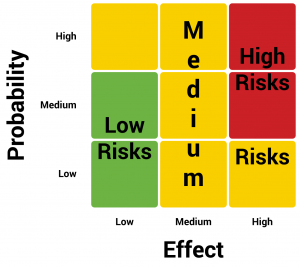Is quality control really improving internal processes?
The purpose of implementing a process approach aims to enhance the organization’s level of effectiveness and efficiency to achieve its defined objectives. Simply put, a process transforms inputs into outputs. This is done seamlessly when the process is planned; plans are executed, checked, and acted upon in order to improve the process. Undergoing through such processes also requires some application of quality management systems to be aligned with the processes within the organization.
Additionally, implementing a process-based approach to either services or manufacturing industries helps the development of stability in operations and better management. Managing through preventing nonconformities in processes does help the organization gather better information to where the problems are and how they may be actually fixed. What is more, keeping track of operational activities through a process based approach becomes much easier for the organization as well for the employees themselves.

Quality Management System, from hereinafter referred to as QMS, is also a risk management tool that helps organizations to achieve its intended outcomes: enhancing customer satisfaction and complying with its legal obligations. A quality management system helps to ensure that business processes are continuously improved upon.
In essence, a QMS is made up of business processes whose final output is a product offered or service delivered to the client.
QMS contributes to improving process control because it defines requirements that need to be met via process controls in order to ensure process optimization. Moreover, a QMS is established using the Process Approach via the Plan – Do – Check – Act cycle and Risk-Based Thinking. Further, extra precautions are factored into the processes on a consistent manner.
Differently, the PDCA cycle may be referred to as being the basis of continual improvement, which in process-based thinking, becomes crucial. The integration of continual improvement to the benefit of efficiency of processes must follow its process including, reasons for improvement, current situation, analysis, identification of possible solutions, evaluation of effects, implementation and standardization of the new solution, and evaluation of effectiveness after improvement. For all these points, a quality journal is advised to identify, keep, measure, and improve the occurring problems while comparing them to the previous ones.
 The explicit introduction of Risk–Based Thinking in ISO 9001: 2015 is the next best thing that ever happened after chocolate and vanilla ice cream! The advantage of this concept in the new standard cannot be over emphasized.
The explicit introduction of Risk–Based Thinking in ISO 9001: 2015 is the next best thing that ever happened after chocolate and vanilla ice cream! The advantage of this concept in the new standard cannot be over emphasized.
Implementing risk–based thinking helps improve quality control because interested parties requirements are considered and used in line with the context of the organization to plan, and address the risks inherent to the process. Additionally, installing a proactive approach to both the process-based operations and organizational culture is a principle of risk-based thinking. Prioritizing risks as much as having an action plan to tackle risky problems should be at the core of implementing a process-based approach to improve process controls and eliminate risks.

Challenges being faced in Nigeria’s stem are two faceted. One is from understanding and implementing the requirements of the standard as a part of the organization’s business processes, while the other is from understanding the benefits of being certified by an accredited certification body with audits conducted by competent auditors. Most businesses in this region do not understand that business process controls can be improved through the implementation of QMS.
This can be corrected by ensuring that training is provided by competent people and the trainers; being continuously trained and retrained to ensure consistency in interpreting the requirements of the standard. Certainly, certification by an accredited certification body, attributed to a risk – based thinking strategy, can also help optimize the process.

PECB
The aim of maintaining a positive attitude towards implementing ISO 9001, as referred to by PECB, is the foundation of increasing quality of operations within your organization. With a direct effect on customer satisfaction, certifying against ISO 9001 would clearly increase your credibility and assurance towards customers. Further, integrating “risk-based thinking” methods, and applying the process approach would build a strong knowledge base while establishing a proactive culture for improvement.









